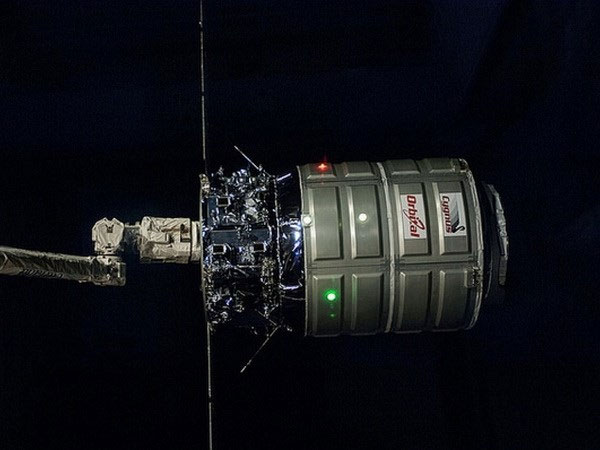Unmanned cargo ship Cygnus self-destruct after leaving ISS
On August 17, Cygnus Unmanned Commercial Spacecraft of Orbital Sciences Group (USA) burned and destroyed itself as planned when returning to Earth's atmosphere.
>>>Cygnus "docked" the international space station
Cygnus was launched on July 13 to carry out a 1-month refueling mission for the International Space Station (ISS).

Unmanned commercial spacecraft Cygnus.(Photo: NASA)
After completing the mission, Cygnus was released from orbit on August 15 at 10:40 am (GMT) and moved in orbit independently for two days before starting the engine and returning. Earth's atmosphere.
The combustion of Cygnus has been planned to last for about 30 minutes. The crew on the ISS monitored and recorded the process.
Cygnus was launched from East Virginia, using Antares missiles built by Orbital Sciences.
This mission is the second commercial flight of Orbital Sciences' eight spacecraft launched to ISS until 2016, according to a cargo service contract (Commercail Resuppy Services) worth $ 1.9 billion. USD by Orbital Sciences with the US Aerospace Agency (NASA).
During this flight, Cygnus carried 1,657kg of goods including food, machinery parts and scientific equipment.
- Cygnus cargo ship successfully assembled with ISS station
- Cygnus private transport vessel leaves the International Space Station
- The supply ship for ISS departed this morning in Vietnam time
- Cygnus postpones 'docking' ISS due to positioning error
- The Soyuz crash, the ship Cygnus again postponed the ISS landing
- The US successfully launched unmanned ships onto ISS
- Russian cargo spacecraft exploded as soon as it left the launch pad
- Unmanned cargo ship starts offshore in 2018?
- Rolls-Royce is developing unmanned cargo ships
- Unmanned cargo ship Dragon returned to Earth safely
- Cygnus' ships docked at the international space station
- NASA confirmed its plan to send the Cygnus to the International Space Station in October
 Van Allen's belt and evidence that the Apollo 11 mission to the Moon was myth
Van Allen's belt and evidence that the Apollo 11 mission to the Moon was myth The levels of civilization in the universe (Kardashev scale)
The levels of civilization in the universe (Kardashev scale) Today Mars, the sun and the Earth are aligned
Today Mars, the sun and the Earth are aligned The Amazon owner announced a secret plan to build a space base for thousands of people
The Amazon owner announced a secret plan to build a space base for thousands of people